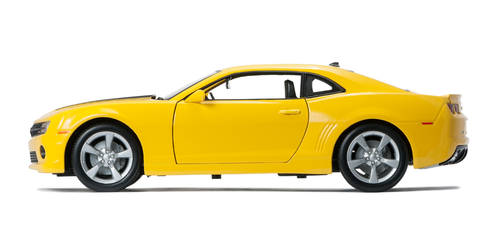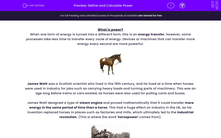What is power?
When one form of energy is turned into a different form, this is an energy transfer. However, some processes take less time to transfer every Joule of energy. Devices or machines that can transfer more energy every second are more powerful.

James Watt was a Scottish scientist who lived in the 18th century, and he lived at a time when horses were used in industry for jobs such as carrying heavy loads and turning parts of machinery. This was an age long before trains or cars existed, as horses were also used for pulling carts and buses.
James Watt designed a type of steam engine and proved mathematically that it could transfer more energy in the same period of time than a horse. This had a huge effect on industry in the UK, as his invention replaced horses in places such as factories and mills, which ultimately led to the industrial revolution. (This is where the word 'horsepower' comes from).
.jpg)
A steam locomotive uses James Watt's concept.
The following century, steam trains were developed, and eventually horses were no longer needed for transport with the invention of the motor car in the early 1900s. So you can trace it all back to James Watt that you can travel in a car or a bus, rather than having to ride a horse to school.

Modern sports car (around 1,000 horsepower)

Horse-drawn cart (1 horsepower)
The equation for power
Power is the rate of transfer of energy and its units are Watts, after James Watt.
The equation is:
Power = Energy ÷ Time
The equation only works with power in Watts, energy in Joules, and time in seconds. If you have units such as kW or minutes, you need to convert them before doing your calculation.
You also need to be able to rearrange the equation to find energy and time:
Energy = Power x Time
Time = Energy ÷ Power
That's a lot to remember but you can look back at this introduction at any point by clicking on the red help button on the screen.









